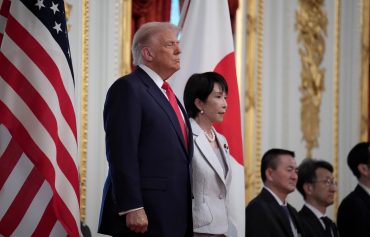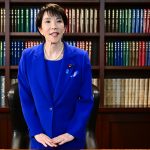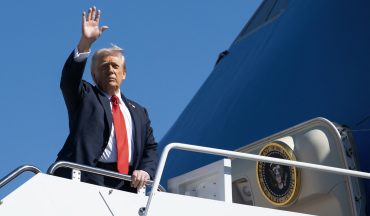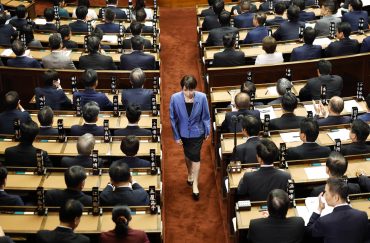
- Rare Earths
- Semiconductors
- Trade Policy
Tokyo Accords Reshape the U.S.–Japan Tech and Industrial Alliance
10 minute read

Trump and Japan’s PM Takaichi unveil a $550 billion plan spanning semiconductors, AI, and rare earths to rebuild supply chains and counter China’s dominance.
Key Takeaways
-
$550 billion U.S.–Japan investment accord channels Japanese capital into U.S. semiconductor, AI, energy, and critical-minerals projects — the largest bilateral program since the Plaza Accord.
-
Technology Prosperity Deal covers AI, quantum, and fusion, embedding research-security rules, supply-chain resilience, and aligned tech standards across both nations.
-
Rare-earth framework targets China’s 90 % refining dominance, establishing a Rapid Response Group and new mining ministerial to diversify sources within six months.
Introduction
Tokyo — When Donald Trump arrived in Japan on October 28, the American president brought with him not merely the symbolism of alliance but the machinery of industrial rearrangement. Meeting with Prime Minister Sanae Takaichi at the Kantei, Trump formalized three interconnected agreements that together represent the most consequential recalibration of U.S.-Japan economic relations since the Plaza Accord: a $550 billion investment framework directing Japanese capital into American manufacturing, a sweeping technology partnership covering artificial intelligence through fusion energy, and a critical minerals accord designed to fracture China’s stranglehold on the inputs of advanced industry.
The timing carries weight. Trump landed in Asia with the federal government entering its twenty-eighth day of shutdown, Congress gridlocked over spending, and tariff threats hanging over trading partners. Yet in Tokyo, where Takaichi governs with a fractious coalition following the Liberal Democratic Party’s recent electoral setback, both leaders found common cause. What emerged was less diplomacy than economic engineering—an attempt to rewire supply chains, redirect capital flows, and establish technological standards that exclude Beijing from the commanding heights of the next industrial era.
Capital as Strategy
The foundation was laid months earlier. In July, the two governments concluded the U.S.-Japan Strategic Trade and Investment Agreement, which Trump ratified by executive order on September 4. Japan committed $550 billion—roughly eleven percent of its gross domestic product—to be channeled through a bilateral investment vehicle where Washington retains directional authority and claims ninety percent of generated profits. The scale dwarfs precedent. Saudi Arabia’s Public Investment Fund, by comparison, manages approximately $925 billion globally across all holdings. Here, Japan has pledged more than half that sum specifically to American industrial projects.
The sectors identified reveal strategic intent. Semiconductor fabrication and research dominate, aimed at rebuilding domestic foundry capacity that has atrophied over three decades. Critical minerals extraction addresses dependencies that became uncomfortably visible when China restricted gallium and germanium exports in 2023. Energy infrastructure responds to projections that artificial intelligence workloads could consume two percent of global electricity by 2030. Pharmaceuticals acknowledge pandemic vulnerabilities. These are not scattered investments but systematic attempts to reconstruct industrial capabilities that globalization dissolved.
During the Tokyo meetings, Takaichi outlined preliminary commitments. SoftBank, Masayoshi Son’s conglomerate, is examining hyperscale AI infrastructure investments that could approach $100 billion. Hitachi, partnered with GE Vernova, is evaluating small modular reactor deployments to power the data centers that AI requires. Japan’s Ministry of Economy, Trade and Industry indicated that approximately twenty companies across both nations have expressed formal interest. The machinery is institutional: Japanese firms gain privileged access to American markets and co-development opportunities; American communities receive capital for projects that might otherwise languish for want of financing.

Beyond Hardware
The Technology Prosperity Deal, signed by science ministers from both governments, extends beyond hardware into the full technology stack. The memorandum identifies artificial intelligence as the organizing priority—not merely the models that capture headlines but the infrastructure layer beneath them. High-performance computing, advanced semiconductors, quantum processors, software frameworks, application development, and international standards all fall within scope. The agreement envisions joint development of Open RAN architecture for sixth-generation wireless networks, quantum communication systems resistant to cryptographic attack, biotechnology protocols, and fusion energy research leveraging Japan’s JT-60SA tokamak. Space cooperation extends existing Artemis lunar arrangements while addressing orbital debris.
What distinguishes this from previous science agreements is the explicit integration of security considerations. The deal mandates research security protocols to prevent intellectual property leakage, supply chain resilience mechanisms to diversify sourcing across Indo-Pacific allies, and regulatory harmonization to facilitate technology transfer between the two nations. These provisions acknowledge what has become impossible to ignore: that technological development and geopolitical competition have become inseparable, that the networks through which innovation flows must themselves be secured.
The Minerals Question
The Critical Minerals and Rare Earths Framework carries Trump and Takaichi’s personal signatures, unusual for what might otherwise be handled at ministerial level. The elevation signals importance. China processes approximately ninety percent of global rare earth elements—the separation and refinement of raw ores into usable oxides required for neodymium magnets in electric motors, samarium in precision alloys, gallium in gallium nitride semiconductors that power AI accelerators. Dependence runs deeper than most realize: these elements appear in trace quantities but prove irreplaceable for performance characteristics that define competitive advantage.
The framework establishes joint project identification within months, mobilizes grants and loans alongside offtake guarantees to attract private capital, and creates a Rapid Response Group under the U.S. Energy Secretary and Japan’s METI Minister to address supply disruptions. Permitting streamlining, geological mapping, and even rare earth recovery from electronic waste all receive attention. Within six months, a Mining Ministerial will convene stakeholders. The goal is not self-sufficiency, which remains implausible, but diversification sufficient to eliminate single points of failure.
Competing Logics
The geopolitical logic requires little excavation. China’s Huawei returned to advanced semiconductor production despite sanctions, demonstrating that technological containment through export controls alone proves insufficient. Taiwan Semiconductor Manufacturing Company’s concentration in Taiwan—producing over sixty percent of global semiconductors and ninety percent of the most advanced chips—creates what analysts term the “silicon shield,” making the island simultaneously indispensable and vulnerable. American dependence on foreign fabrication grew acute when pandemic disruptions idled automotive production for want of chips.
For Trump, the agreements allow him to wield investment as alternative to pure tariffs. Japan funds American industrial renewal while receiving implicit protection from the twenty-five percent automotive duties the president has threatened. For Takaichi, governing a minority coalition after October’s disappointing election results, the agreements demonstrate economic dynamism and strengthen ties with Washington at a moment when Chinese military activity near Japanese waters has intensified. Both leaders face domestic political pressures that make international achievements valuable.

Cascade Effects
The implications extend across domains. Economically, $550 billion in directed investment could generate hundreds of thousands of manufacturing jobs—semiconductor fabrication facilities in Ohio, critical minerals extraction in Nevada, advanced nuclear reactors in Pennsylvania. Industry estimates suggest each semiconductor manufacturing position generates five to six additional roles in the surrounding ecosystem through suppliers, services, and induced economic activity.
Strategically, the U.S.-Japan axis, reinforced through Quad arrangements with Australia and India, constructs an alternative supply architecture that reduces Beijing’s leverage. Technologically, interoperable AI standards and quantum communication protocols create network effects that advantage participants while raising barriers to entry.
The Implementation Test
Yet risks remain unspoken in official statements. Japanese corporations, facing pressure from shareholders accustomed to global returns, may resist profit-sharing arrangements that favor American stakeholders so heavily. American regulatory and permitting systems, despite promised reforms, have historically delayed projects by years. The political durability of these commitments across future administrations remains uncertain.
Still, momentum accumulates. SoftBank separately pledged $100 billion for American AI infrastructure before these agreements. The Rapid Response Group activates within weeks. Projects move from memoranda to implementation.
What occurred in Tokyo was not summitry as theater but economics as statecraft. The three agreements—investment, technology, minerals—form an integrated architecture for technological competition. They represent a wager that capital deployment, supply chain reconstruction, and standard-setting can achieve what tariffs and sanctions cannot: the reconstitution of Western technological primacy not through isolation but through preferential integration among allies.
Whether this proves sufficient depends on execution that has yet to occur and political will that may yet falter. But the ambition is clear. In an era when semiconductors and rare earths carry the strategic weight that oil once did, Trump and Takaichi have chosen to compete not by decoupling entirely from global markets but by constructing parallel systems where the terms of participation are set in Washington and Tokyo rather than Beijing. The golden age they invoke remains aspirational. What is certain is that the contest itself has entered a new phase.







